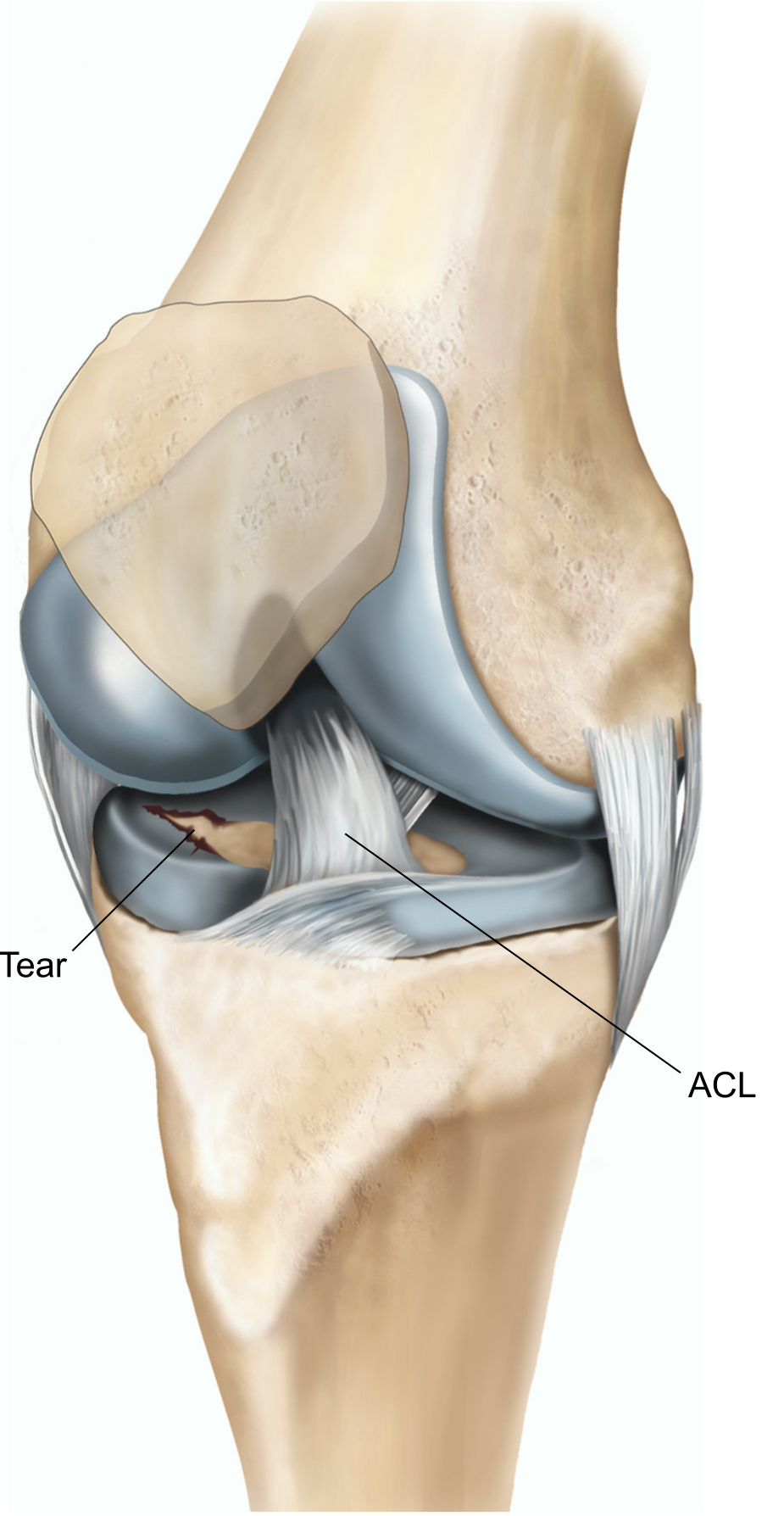Arthroscopy of the knee

A right knee with a tear in the lateral meniscus
What is an arthroscopy of your knee?
An arthroscopy (keyhole surgery) allows your surgeon to see inside your knee using a camera inserted through small cuts on your skin. Your surgeon can diagnose problems such as a torn cartilage (meniscus), ligament damage and arthritis.
What are the benefits of surgery?
The aim is to confirm exactly what the problem is and for many people the problem can be treated at the same time. The benefit of keyhole surgery is less pain afterwards and for some people, a quicker recovery.
Are there any alternatives to surgery?
Problems inside your knee can often be diagnosed using a magnetic scan (MRI scan) but you may then need an arthroscopy to treat the problem.
Physiotherapy and anti-inflammatory painkillers such as ibuprofen can sometimes prevent or delay the need for an arthroscopy.
What does the operation involve?
Various anaesthetic techniques are possible. The operation usually takes 30 to 45 minutes.
Your surgeon will examine the inside of your knee ligaments while you are under the anaesthetic and your muscles are completely relaxed. They will insert a small camera through one or more small cuts around your knee.
Your surgeon will examine the inside of your knee for damage to the cartilages, joint surfaces and ligaments. It is usually possible for your surgeon to trim or repair a torn cartilage without needing to make a larger cut.
How can I prepare myself for the operation?
If you smoke, stopping smoking now may reduce your risk of developing complications and will improve your long-term health.
Try to maintain a healthy weight. You have a higher risk of developing complications if you are overweight.
Regular exercise should help to prepare you for the operation, help you recover and improve your long-term health. Before you start exercising, ask the healthcare team of your GP for advice.
Speak to the healthcare team about any vaccinations you might need to reduce your risk of serious illness while you recover. When you come into hospital, practise hand washing and wear a face covering when asked.
What complications can happen?
Some complications can be serious and even cause death.
General complications of any operation include:
- bleeding
- infection of the surgical site (wound)
- Allergic reaction to equipment, materials or medication
- blood clot in your leg
- blood clot in your lung
- difficulty passing urine.
- chest infection
Specific complications of this operation include:
- damage to nerves around your knee
- infection in your knee joint
- severe pain
Consequences of this procedure include:
- pain
- unsightly scarring of your skin.
How soon will I recover?
You should be able to go home the same day.
It is common for your knee to be a little swollen for a few weeks.
Walking can be uncomfortable and you may need to take painkillers to help relieve your pain.
Regular exercise should help you to return to normal activities as soon as possible. Before you start exercising, ask the healthcare team or your GP for advice.
Most people make a good recovery and can return to normal activities.
Summary
An arthroscopy allows your surgeon to diagnose and treat some common problems affecting your knee, without the need for a large cut on your skin. This may reduce the amount of pain you feel and speed up your recovery.
Where to get help
Last reviewed: 07-07-2023
Acknowledgements
Patient Safety & Clinical Quality
EIDO Healthcare Australia

The operation and treatment information on this page is published under license by Department of Health Western Australia from EIDO Healthcare Australia and is protected by copyright laws. Other than for your personal, non-commercial use, you may not copy, print out, download or otherwise reproduce any of the information. The information should not replace advice that your relevant health professional would give you.